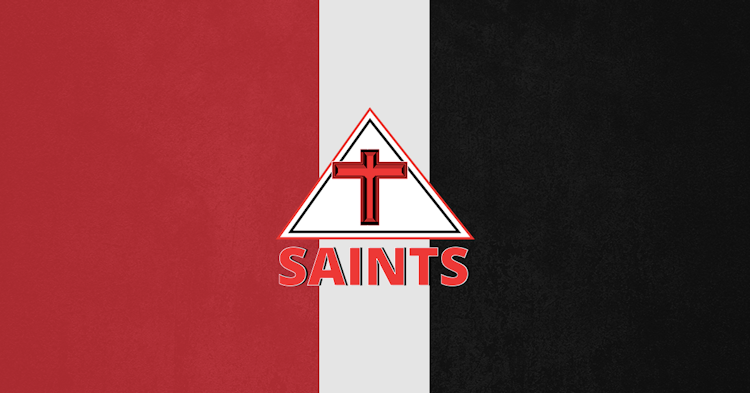'Under New Management': Why Brett Ratten’s Saints Are Blowing Us Away
Last updated: Jul 30, 2020, 1:00AM | Published: Jul 29, 2020, 3:01AM
Today – in the second edition of 'Under New Management' here at Stats Insider – we’ll take a look at the Saints as coached by Brett Ratten, who this week achieved a breakthrough win over ladder-leading Port Adelaide.
As per last week’s discussion of Carlton and David Teague, we’ll break down the stats over five key areas: how well they’re winning the ball, moving the ball, scoring, defending, and the demographics of the sides they’re putting on the field.
WINNING THE BALL
St Kilda have taken an incremental step forward in just about every measure regarding ball-winningin 2020 – but not by so large a margin as to explain their significant improvement on field.
Under Alan Richardson in 2019 they averaged -1.13 clearances versus their opponents, ranked 12th in the league, but in 2020 they have improved to +1.5 average differential, ranked 9th.
There’s been a similar improvement in ground ball gets – they were averaging +1 under Richardson last year, now they’re averaging +3.25, ranked 8th.
When it comes to putting pressure on the opposition, their stats remain near identical to what we saw under Richardson in 2019.
Their pressure acts per minute have increased slightly but their tackles per minute have suffered a minor decline. In 2020 their opponents are averaging 45 seconds of possession before a turnover, down from 46 under Richardson, but the Saints were ranked 15th in the league in both time periods.
Overall, winning the ball isn’t necessarily a major strength of this team, nor an area where they’ve taken a great leap forward.
RELATED: Cuddles for everyone! 18 teams, 18 reasons to smile
MOVING THE BALL
 There are a few more noticeable changes to be seen in how St Kilda are moving the ball under
Brett Ratten – the biggest being the speed at which they do so.
There are a few more noticeable changes to be seen in how St Kilda are moving the ball under
Brett Ratten – the biggest being the speed at which they do so.
We often think of fast ball movement as preferable. But the Saints have actually slowed down their ball movement significantly in 2020, from 113 metres gained per minute under Richardson last year to 102.
That ranks the Saints as 16th for ball movement speed in the league. But it’s not a bad stat to be ranked low in – quality sides like Brisbane, Geelong, GWS and Collingwood join St Kilda in the bottom five.
This goes hand in hand with an increase in their kick-to-handball ratio, from 1.44 to 1.58, a move from 9th to 6th in the league. The Saints have also moved from 10thto 8th in terms of their uncontested-to-contested possession ratio.
It’s not a strategy that is necessarily producing inside 50s in bulk. The Saints have an average -0.75 differential in this area, ranked 11th in the comp – although this still represents a big improvement on their numbers under Richardson in 2019.
But the use they make of inside 50s when they do create them has changed completely.
RELATED: Size Matters: The Types Of Forwards Scoring For And Against Your Club
SCORING
Under Alan Richardson the Saints scored a glacially slow 1.48 points per minute of possession – the second-lowest of any side in the league for that time period.
Under Brett Ratten, in 2020? 1.67 points per minute- the No.1 side in the competition.
Richardson’s 2019 Saints were scoring a goal from 20.3% of the inside 50s they generated, the fifth-least of any team. In 2020, the Saints get a goal from 28.2% of inside 50s, second in the league behind only GWS.
Under Richardson they were known for poor performance in front of goal – they had just 43% goalkicking accuracy under him in 2019, and only realised 91.8% of their expected score.
That accuracy has improved significantly under Brett Ratten. They’re converting 53% of shots on goal – but in something of a surprise, they are still only realising 98.3% of their expected score.
Why? While their raw accuracy has improved, it’s not just about taking their opportunities, but creating far better ones.
 Stats Insider’s own shot charting toolillustrates this beautifully when we look to compare the Saints under Richardson’s tenure in 2019 vs Brett Ratten’s Saints of 2020.
Stats Insider’s own shot charting toolillustrates this beautifully when we look to compare the Saints under Richardson’s tenure in 2019 vs Brett Ratten’s Saints of 2020.
Under Richardson, the Saints were taking shots from all over the place – seemingly anywhere but directly in front. There are big hotspots in the right and left pockets, which are understandably more difficult to convert from.
In 2020, the Saint’s biggest hotspot is an almost perfectly straight line directly in front of goal extending most of the way to the 50m arc – and when the Saints do attempt shots from more difficult angles, they’re still much more direct than in the past.
In terms of the raw numbers, St Kilda had an average of 3.18 expected points per shot on goal under Richardson, which has been bumped up to 3.69 in 2020.
A combination of better shots and improved accuracy has made them into one of the league’s most dangerous teams with ball in hand.
RELATED: Stats That Matter - The Changing Face of the Forward
DEFENDING
St Kilda’s defence has also enjoyed a notable improvement under Ratten. They’re conceding 1.44 points per minute of opposition percentage, ranked 7th in the comp, which is a massive improvement from 1.72and 16th under Richardson last year.
Richardson’s Saints were the worst team in the league for opposition accuracy in front of goal, conceding a goal for 51.2% of shots.
In 2020, the Saints have reduced this to 46.1%, ranked ninth in the league, suggesting their opponents are finding it much harder to create good scoring opportunities.
The Saints allow their opposition to score a goal from 22.6% of their forward entries – which is a below-average 13th in the league.
But again, it still represents a significant improvement on the past, where they were ranked 17th with 25.8%.
DEMOGRAPHICS
Although there’s a lot of new faces in this 2020 St Kilda said, they haven’t necessarily undergone a marked demographic change compared to the past.
In 2020 the Saints are 24.83 years old on average, compared to 24.35 last year – a rise only from 17th in the comp, to 15th in the league.
 In terms of experience, they were fielding 1547 games on average under Richardson last year, which has increased to 1750 under Ratten – but this still only represents a move from 17th to 14th.
In terms of experience, they were fielding 1547 games on average under Richardson last year, which has increased to 1750 under Ratten – but this still only represents a move from 17th to 14th.
You’d expect some kind of increase given the number of mature recruits the Saints brought into the club at the end of 2019 – but on the whole, they remain a young and inexperienced side with plenty of development ahead of them.
RELATED: For Young And Old: How Age And Experience Affect AFL Results
CLOSING THOUGHTS
It’s clear that St Kilda’s biggest area of improvement under Brett Ratten has been in their scoring ability where they do, at the present moment, hold the crown as the No.1 AFL side for points per minute of possession.
This scoring power improvement is the product of improved accuracy on goal but also creating better shots on goal, which itself is likely linked with the slower, more deliberate ball movement that Ratten has instituted.
Personnel undoubtedly is part (but not all) of the reason for their improvement. Alan Richardson never got to put Max King or Dan Butler into his 22, both of whom have been crucial to reshaping St Kilda’s forward line.
At the opposite end of the ground, Dougal Howard has become an important part of reshaped St Kilda defence, while Paddy Ryder, Zak Jones and Brad Hill have all put in some good performances. The last of those in particular probably has another level to go to at some point.
Can St Kilda maintain their dramatic improvement in scoring power? One would expect other clubs will be looking for ways to limit them.
However there’s clearly potential for improvement from them in terms of their ability to apply pressure and win the ball, and they are fielding plenty of young players who will likely only have more and more impact as time goes on (just imagine 2025 Max King).
What they may lose from one area of their game, there’s room to make up in others. It’s exciting to watch them now, and only more exciting to imagine their future.
Note: The stats on points from stoppages/possessions used in this article are recorded as they were published after each game in the Herald Sun.
For a small number of matches these stats were never published, and there is also known to be a small number of typographical errors in the original source data.
Did you enjoy this article? Join our free mailing list to get the best content delivered straight to your inbox, or join the conversation by leaving a comment below or on the Stats Insider Twitter or Facebook page.



